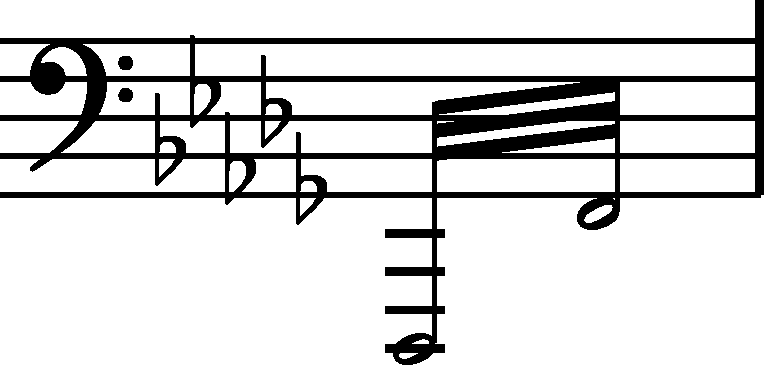



Issues : Authentic corrections of FE
|
b. 258
|
composition: Op. 2, Variations, complete
..
The minim tremolo was added – certainly by Chopin – in the stage of proofreading FE1. We replace the "tim" abbreviation used there with the contemporary "Timp." The musical notation is of a conventional nature – Chopin must have meant an octave tremolando category imprint: Differences between sources issues: Authentic corrections of FE |
|||||||||||||
|
b. 260
|
composition: Op. 2, Variations, complete
..
Chopin added the octave bass sequence in the 2nd half of the bar while proofreading FE1. This addition, undoubtedly drawn from FE, was also introduced into EE3. According to us, it is likely that the composer wanted this unquestionable improvement of the version for one piano to apply to the version of the piece with orchestra too (as a complement to the cellos and the double basses). A few years later, also exclusively in the version for one piano, Chopin introduced a change into the first tutti in mov. III of the Concerto in F minor, Op. 21. It is also there that we can assume that the changed text was supposed to concern the orchestral part also in the full version of the piece. category imprint: Differences between sources; Corrections & alterations issues: Accompaniment changes , Authentic corrections of FE , Authentic post-publication changes and variants |
|||||||||||||
|
b. 261-262
|
composition: Op. 2, Variations, complete
..
All three source versions of the text written in smaller notes are rather a harmonic complement to the solo part when "performed without accompaniment" than an actual replica of the string voices. At the same time, the earlier versions of Af and A are closer to the orchestral part than the later one, placed in a higher register. All versions of notation also contain mistakes or rhythmic simplifications; we reproduce the clearly erroneous ones only in the content transcription (version "transcript"). category imprint: Differences between sources; Editorial revisions; Corrections & alterations; Source & stylistic information issues: GE revisions , Rhythmic errors , Errors of A , Authentic corrections of FE |
|||||||||||||
|
b. 262
|
composition: Op. 2, Variations, complete
..
The versions of Af and A, identical in terms of the way they sound, differ only in additions – an indication specifying the instrumental group in Af and a category imprint: Differences between sources; Corrections & alterations issues: Chopin's hesitations , Errors in GE , Accompaniment changes , Authentic corrections of FE |
|||||||||||||
|
b. 265
|
composition: Op. 2, Variations, complete
..
In AsI, Af and A (→GE1→EE1→EE2) there is no category imprint: Interpretations within context; Differences between sources issues: EE revisions , GE revisions , Omission of current key accidentals , Errors of A , Authentic corrections of FE , FE revisions |

 . This is not an accurate reproduction of the timpani part either, since in the timpani the tremolo lasts only a crotchet and ends with a single note on the 4th beat of the bar (quaver and rest). The remaining sources of the piano part contain here only the solo voice rest. See also bar 260. The described addition was also introduced by
. This is not an accurate reproduction of the timpani part either, since in the timpani the tremolo lasts only a crotchet and ends with a single note on the 4th beat of the bar (quaver and rest). The remaining sources of the piano part contain here only the solo voice rest. See also bar 260. The described addition was also introduced by  -d
-d






 in
in  lowering c2 to c
lowering c2 to c